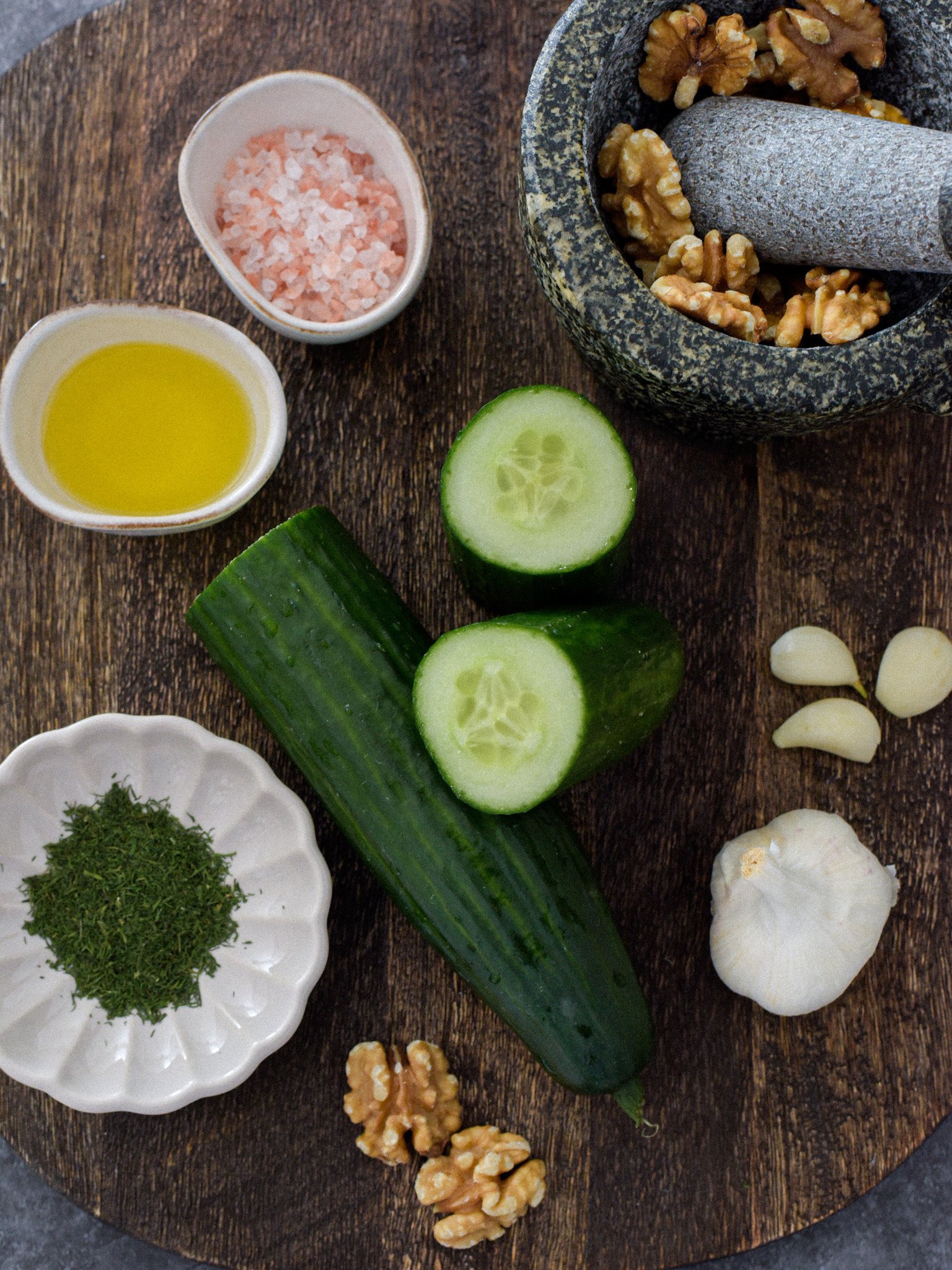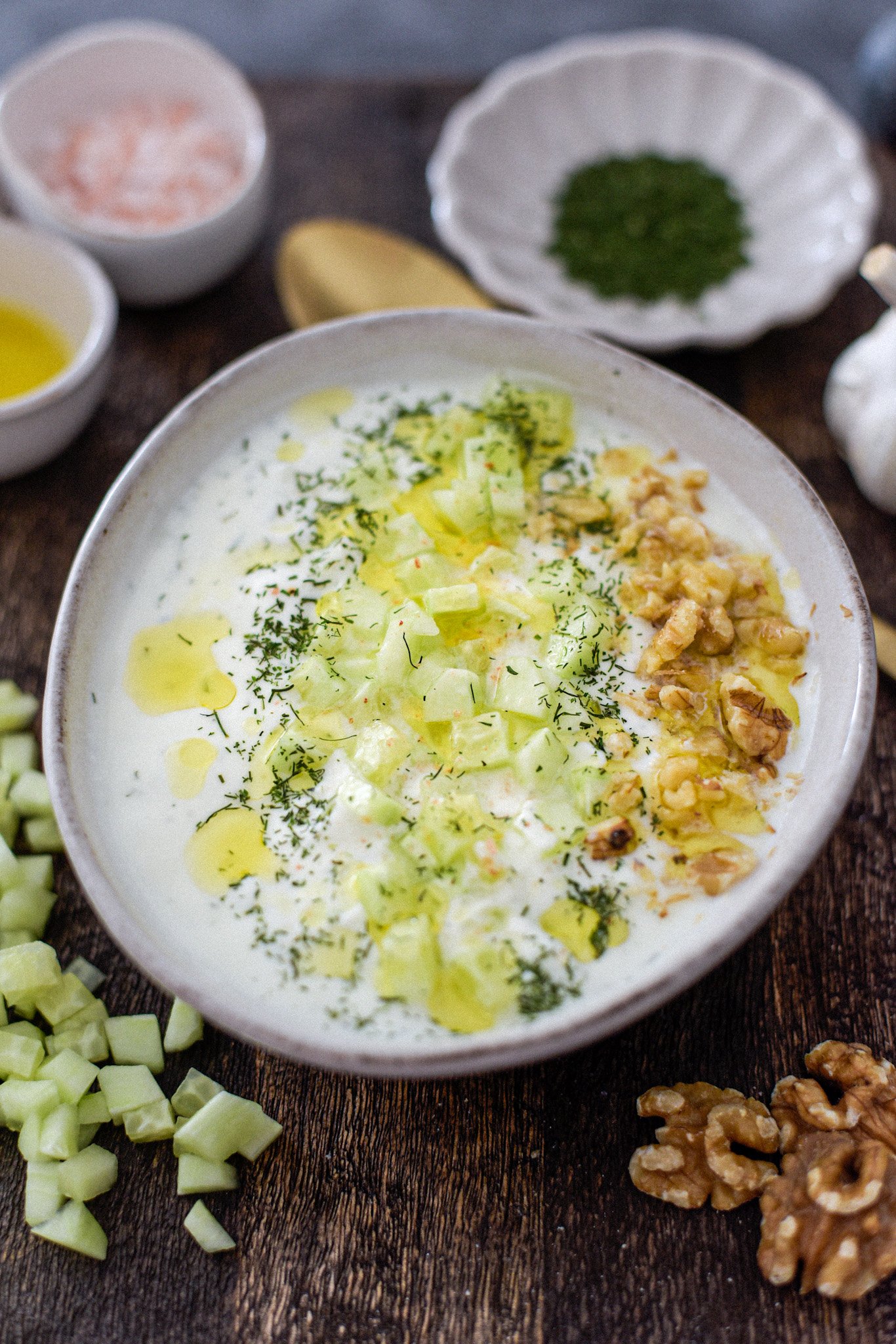For the Love of Bulgarian Yogurt
Bulgarian yogurt is a thing. At the time I went to live abroad, I had a real cultural shock when entering in foreign supermarkets and walking up to the milk refrigerator. The “yogurt” available there was packaged in small pots of 125ml, sweetened and colored artificially, without the precious Lactobacillus bulgaricus inside. Bulgarian yogurt is nothing like this. It is the food I miss most when I’m not in the country and it’s surprisingly hard to find in Europe. I guess a good point to start with the differentiators is in the ingredients of the product itself.
My favorite yogurt in the world, website of the producers here (in BG only)
Every yogurt you find in Bulgaria has actual fermented cultures a.k.a. beneficial bacteria inside. If you want to be modern or fancy, call it a “natural probiotic”. Probiotics help maintain a healthy, diverse gut flora which contributes to an overall benefit for health. The bacteria in the yogurt makes it taste a bit sour, or tangy. Its texture is not smooth and creamy, but kind of chunky. It is quite normal to have a tiny bit of water on top of the yogurt and if you wish to make it smooth, you’d have to stir it with a spoon. When it comes to consistency, we usually have two types of fat percentage : 2% for a lighter thickness and 3,6% which is more thick. You can also find yogurt form different milks - goat, buffalo and sheep most commonly. Those yogurts tend to go up in fat percentage 4,6% and sometimes more. Yup, that’s what yogurt means naturally in Bulgaria - diverse and wholesome.
Furthermore, I don’t recall having had a sweetened yogurt. I don’t even know if we have them in supermarkets in Bulgaria because I’ve never looked for them. Probably we do though, people do love sugar 🤷♀️ Sweetened yogurt was not something we had as kids, nor something our parents or grandparents had.
Finally, the last big difference is in the packaging. I know it might sound funny, but I almost find it offensive to eat only 125ml of yogurt. In Bulgaria, the norm is 400-500ml. That is the standard package size for this delicious food. There are also jars of 1 litter/ 1kg of yogurt. It is perfectly normal to eat a pot of 400-500ml per person at once. In fact, this is quite a common summer breakfast or an afternoon snack. I take a pot of yogurt to the beach regularly in the summer to refresh myself in the scotching heat. It is what it is 🥲
I’m surprised how hard it is to find Bulgarian yogurt in other European countries. Now and then, some supermarkets might have it, but it’s a niche and rather unknown product. Contrary to Europe, Bulgarian yogurt is very popular in some Asian countries. I’d like to share two stories of my life in Asia just to illustrate the latter by example.
The first story is of my life in Thailand, where I worked for a while. Thailand imports yogurt from the Japanese brand Meiji. This yogurt contains fermented cultures which come originally from Bulgaria. I had a very heartwarming feeling when I saw that the very name of the yogurt was “Bulgaria”. This yogurt is of course equally available and popular in Japan. You can find it in both countries in every 7-Eleven.
The second story I will never forget happened in Tokyo, Japan. I was watching a Noh Theatre performance where the narrative was about sumo wrestlers. During the opening lines, one of the wrestlers said he ate Bulgarian yogurt every morning to maintain physical strength. I was beyond delighted and happy that our yogurt is appreciated at such a level in Japan. This love from my trip to Japan stays with me forever. 🇯🇵❤️
Picured above: The advert of Meiji Thailand and a pot of Meiji Japan yogurt. I spent hours looking through my own photos form 5-6 years ago and I think I’ve lost my Meiji photos. Thank you Japan for No 1 yogurt! 🙏 Images source : Meiji
With that being said, here are my favorite yogurt dishes and their recipes.
foodie corner
〰️
.
〰️
foodie corner 〰️ . 〰️
Ayrian
This is actually the Turkish name of the drink, but we use it in Bulgaria as well. This is a highly popular drink in the Balkans and in the Middle East, where they call it Doogh. It is perfect for cooling down on a hot summer day.
Ingredients : Yogurt, water and salt.
Preparation : Mix water and yogurt in proportions 3/4 for yogurt and 1/4 for water. Add salt to taste. You can also add ice in the glasses when serving.
Tarator
I cringe when people call Tarator a cold soup, because it is such a complete and perfectly balanced dish that calling it “soup” undermines its awesomeness. Variations of this dish exist in other Balkan countries, in Turkey and in the Middle East, but the recipe I share below is how we prepare it at home.
Ingredients : Yogurt (2% fat/less thick), cucumber (1/4 per portion), dill, walnuts, garlic, salt, olive oil.
Preparation : Cut the cucumbers in small cubes, crush the walnuts into small pieces and grind the garlic. Mix it all in the yogurt. The mixture should be neither too thick, neither too watery. If it’s too thick, add a tiny bit of water. Add salt, olive oil and dill to taste. Enjoy this glorious dish.
Dessert
If you want to try the sweetened yogurt recipes of my childhood, here are two variations of how we prepare yogurt desert at home. The below are made with normal sour white yogurt. No cheating 😜
Fruity style : Cut some seasonal fresh fruit on top of the yogurt. Berries work great, but apples, apricots and pears are also super popular choices in Bulgaria. Top with a bit of honey to add extra sweetness.
Grandma style : This is something my grandma used to do, I don’t know how popular it actually is. Just mix your favourite compote with yogurt. Here I’ve given an example of apple compote, but my grandma loved mixing cherry compote with yogurt. For the apple variation, top with cinnamon and poppy seeds. Poppy seeds = instant childhood nostalgia for every kid from Eastern Europe.
I hope you enjoy those dishes in the hot summer days and bon appetite 🤌
Copyright © Alex Kovacheva, Nomad Photos. All rights reserved.








